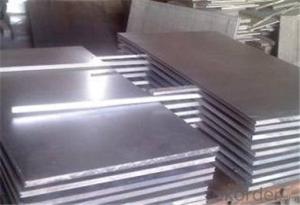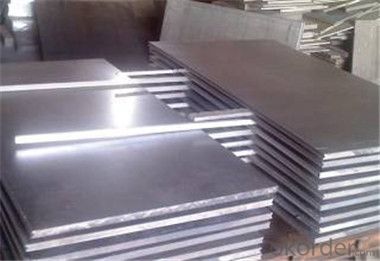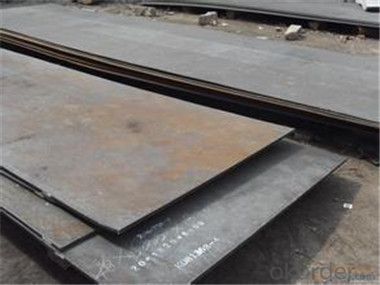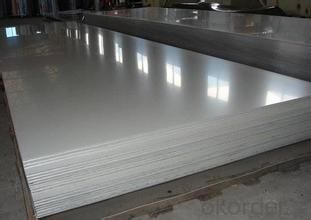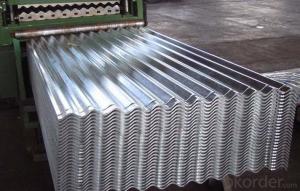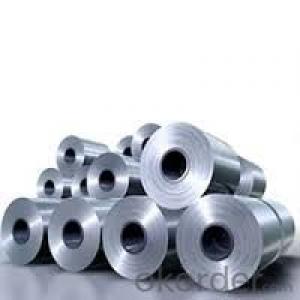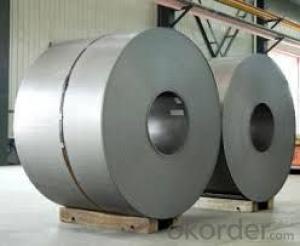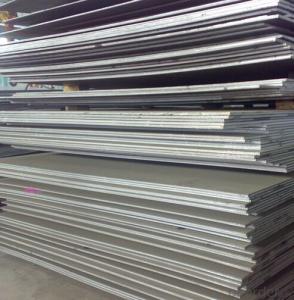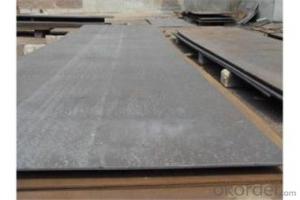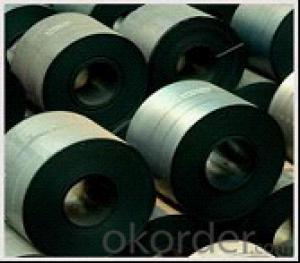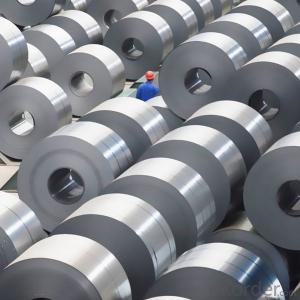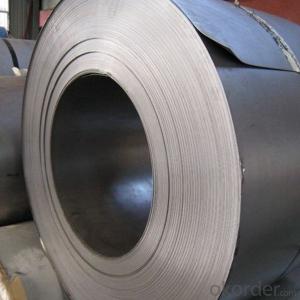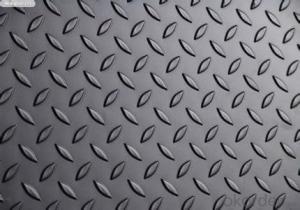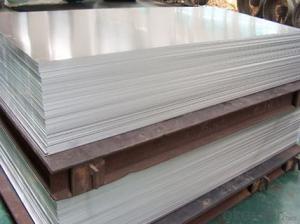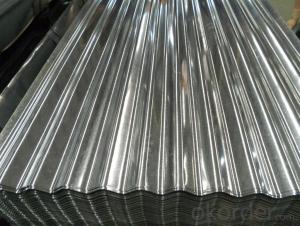Hot Rolled Steel Sheets A36 for Sale from China
- Loading Port:
- Tianjin
- Payment Terms:
- TT OR LC
- Min Order Qty:
- 50 m.t.
- Supply Capability:
- 1000065 m.t./month
OKorder Service Pledge
OKorder Financial Service
You Might Also Like
Specification
Description of steel sheets:
A36/A516 Gr.60/70 hot rolled oil tank/carbon boiler steel plate/sheet
1.Width:1500--4020mm
2.Length:3000-27000mm
Festures of steel sheets:
Steel plates are widly used as boiler plate, container plate, flange plate and ship plate,
and also widly used in building construction. The size of steel plate can be made according
to clients requirements.
Specifications of steel sheets:
Surface Finishes: Bare, Oiled, Mill Varnish, Galvanize, Tape Wrap.
Processing service: Transverse cutting, longitudinal cutting, trimming, volume classification, coated film, coated paper, profile of cutting, bending, punching, welding, removing rust, and product packing, shipping services and On-site assistance.
Images of steel sheets:
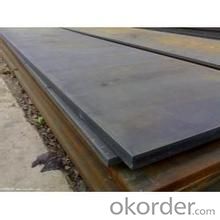
FAQ:
1. What is your package?
Packing situation: standard seaworthy packing or as customer required.
2. How long is the lead time?
Delivery time: 45 days after order confirmed.
3. What payment term do you accept?
Payment: T/T or L/C at sight.
- Q: What are the different methods of cutting steel sheets?
- There are several different methods of cutting steel sheets, including shearing, plasma cutting, laser cutting, waterjet cutting, and abrasive cutting. Each method has its own advantages and disadvantages depending on factors such as the desired precision, speed, cost, and material thickness.
- Q: Can steel sheets be used for interior wall applications?
- Yes, steel sheets can be used for interior wall applications. Steel sheets are strong, durable, and fire-resistant, making them suitable for use in various indoor settings. They can be installed as decorative panels or as a base material for wall cladding systems. Additionally, steel sheets offer benefits such as easy maintenance, excellent sound insulation, and the ability to withstand moisture and humidity.
- Q: Can steel sheets be used for manufacturing electrical enclosures?
- Yes, steel sheets can be used for manufacturing electrical enclosures. Steel is a commonly used material for constructing electrical enclosures due to its durability, strength, and ability to provide necessary protection for electrical components. The use of steel sheets ensures that the enclosure is sturdy and can withstand various environmental conditions. Additionally, steel offers good electromagnetic shielding properties, which can help protect sensitive electronic equipment from interference. Steel sheets are also fire-resistant, making them suitable for manufacturing enclosures that need to meet safety regulations. Overall, steel sheets are a reliable choice for manufacturing electrical enclosures due to their characteristics and suitability for the purpose.
- Q: Stainless steel drawing plate, polishing plate, mirror panels of the three differences
- Stainless steel wire drawing refers to: stainless steel wire drawing is stainless steel surface like filamentous texture, this is only a stainless steel processing technology. The surface is Matt, and carefully look at the above there is a trace of texture, but can not touch it.
- Q: What are the dimensions of standard steel sheets?
- The dimensions of standard steel sheets vary depending on the specific type and application. However, common dimensions for standard steel sheets range from 4 feet by 8 feet to 5 feet by 10 feet.
- Q: How do you calculate the yield strength of a steel sheet?
- To calculate the yield strength of a steel sheet, you need to conduct a test called a tensile test. This test involves stretching a sample of the steel sheet until it reaches its breaking point. During the test, you measure the stress and strain applied to the sample. The yield strength is the point at which the material begins to deform plastically, meaning it does not return to its original shape after the stress is removed. It is an important mechanical property as it indicates the maximum amount of stress a material can withstand without permanent deformation. During the tensile test, you measure the stress applied to the steel sheet as you increase the strain on the sample. Stress is calculated by dividing the force applied to the sample by its original cross-sectional area. Strain is determined by dividing the change in length of the sample by its original length. The yield strength is defined as the stress at which a specific amount of permanent deformation occurs, typically 0.2% strain or 0.2% offset. This means that the yield strength is the stress required to cause a 0.2% change in length of the sample. Once you have obtained the stress-strain data from the tensile test, you can plot a stress-strain curve. The yield strength is then determined by finding the point on the curve where the stress corresponding to the specified amount of strain is reached. In summary, to calculate the yield strength of a steel sheet, you need to perform a tensile test and measure the stress and strain applied to the sample. From the stress-strain curve, you can determine the point at which a specific amount of permanent deformation occurs, which is the yield strength of the steel sheet.
- Q: Can steel sheets withstand extreme weather conditions?
- Indeed, steel sheets are engineered to endure even the harshest weather conditions. Renowned for its robustness and durability, steel proves to be an optimal substance for withstanding the unforgiving forces of nature, including fierce winds, torrential rain, heavy snowfall, and extreme temperatures. Frequently employed in construction, roofing, and outdoor applications, steel sheets are constantly exposed to diverse weather phenomena. Moreover, these sheets can be covered with protective coatings like galvanized or painted finishes, further fortifying their resistance against corrosion and weathering. Ultimately, steel sheets exhibit remarkable reliability, enduring severe weather conditions with minimal harm or deterioration.
- Q: What is the difference between a hot rolled and cold rolled galvanized steel sheet?
- The main difference between a hot rolled and cold rolled galvanized steel sheet lies in the manufacturing process and the resulting properties of the finished product. Hot rolled galvanized steel sheets are made by heating a large steel slab or billet above its recrystallization temperature, which is typically around 1700°F (926°C). This high temperature allows the steel to be easily shaped and formed into the desired thickness and dimensions. The hot rolling process also helps to refine the grain structure of the steel, resulting in improved mechanical properties and a more uniform distribution of alloying elements. On the other hand, cold rolled galvanized steel sheets are manufactured at room temperature by passing the hot rolled sheet through a series of rollers that compress and shape the material. This process not only reduces the thickness of the sheet but also increases its tensile strength and improves its surface finish. Cold rolling also allows for tighter tolerances and more precise dimensions, making it suitable for applications that require high precision and consistency. In terms of properties, hot rolled galvanized steel sheets tend to have a rougher surface finish due to the high temperature processing. However, they are generally more ductile and easier to form or bend compared to cold rolled sheets. Hot rolled sheets also have a slightly thicker oxide layer on the surface, which provides some additional corrosion resistance. Cold rolled galvanized steel sheets, on the other hand, have a smoother and more polished surface finish. They are typically thinner and have a higher strength-to-weight ratio compared to hot rolled sheets. The cold rolling process also results in a more homogeneous microstructure, which can improve the overall mechanical properties of the steel, such as hardness and toughness. Overall, the choice between hot rolled and cold rolled galvanized steel sheet depends on the specific requirements of the application. Hot rolled sheets are often preferred for applications that require easy formability and a rougher surface finish, while cold rolled sheets are favored for their higher strength, tighter tolerances, and smoother surface finish.
- Q: What are the different thickness options for steel sheets?
- The thickness options for steel sheets can vary depending on the specific requirements, but commonly available options range from thin gauges like 30 gauge (0.012 inches) to thicker ones such as 10 gauge (0.134 inches).
- Q: Can steel sheets be used for elevator doors?
- Yes, steel sheets can be used for elevator doors. Steel is a commonly used material for elevator doors due to its strength, durability, and fire-resistant properties.
Send your message to us
Hot Rolled Steel Sheets A36 for Sale from China
- Loading Port:
- Tianjin
- Payment Terms:
- TT OR LC
- Min Order Qty:
- 50 m.t.
- Supply Capability:
- 1000065 m.t./month
OKorder Service Pledge
OKorder Financial Service
Similar products
Hot products
Hot Searches
Related keywords
